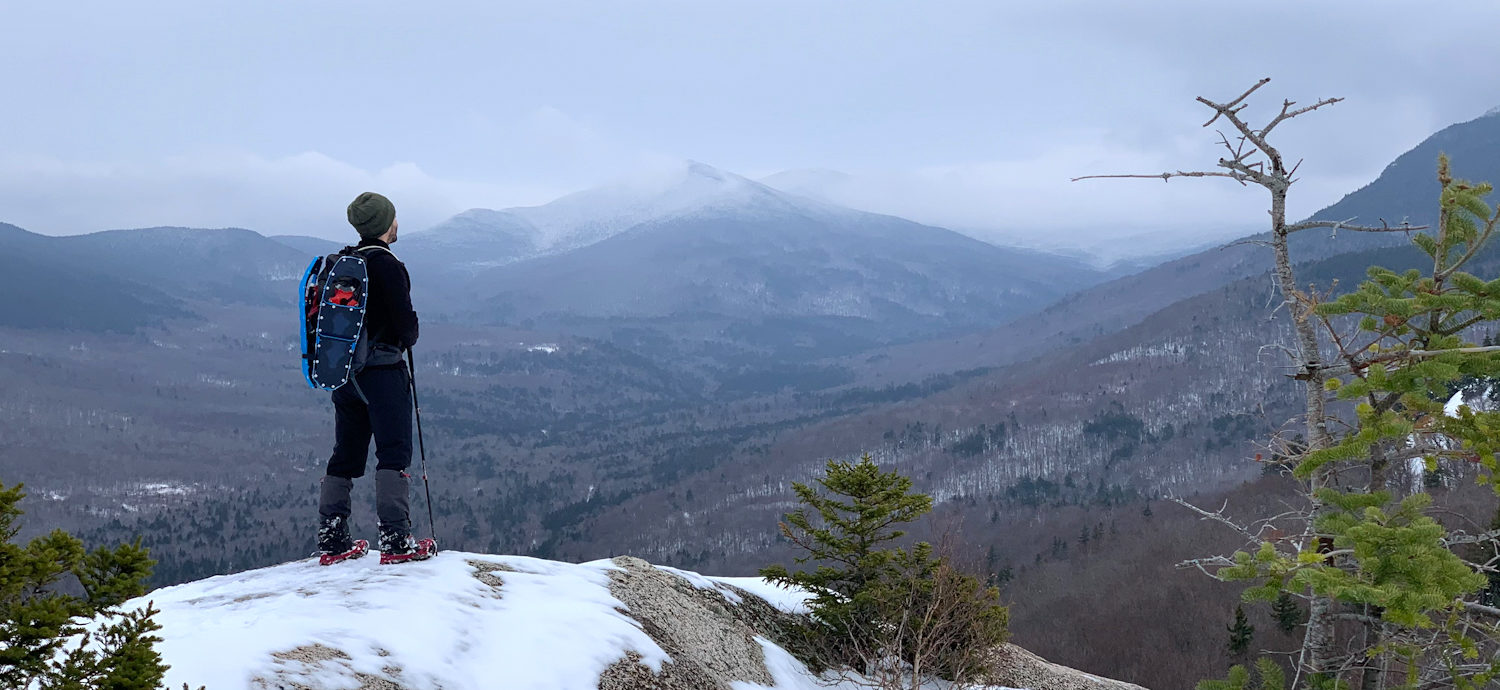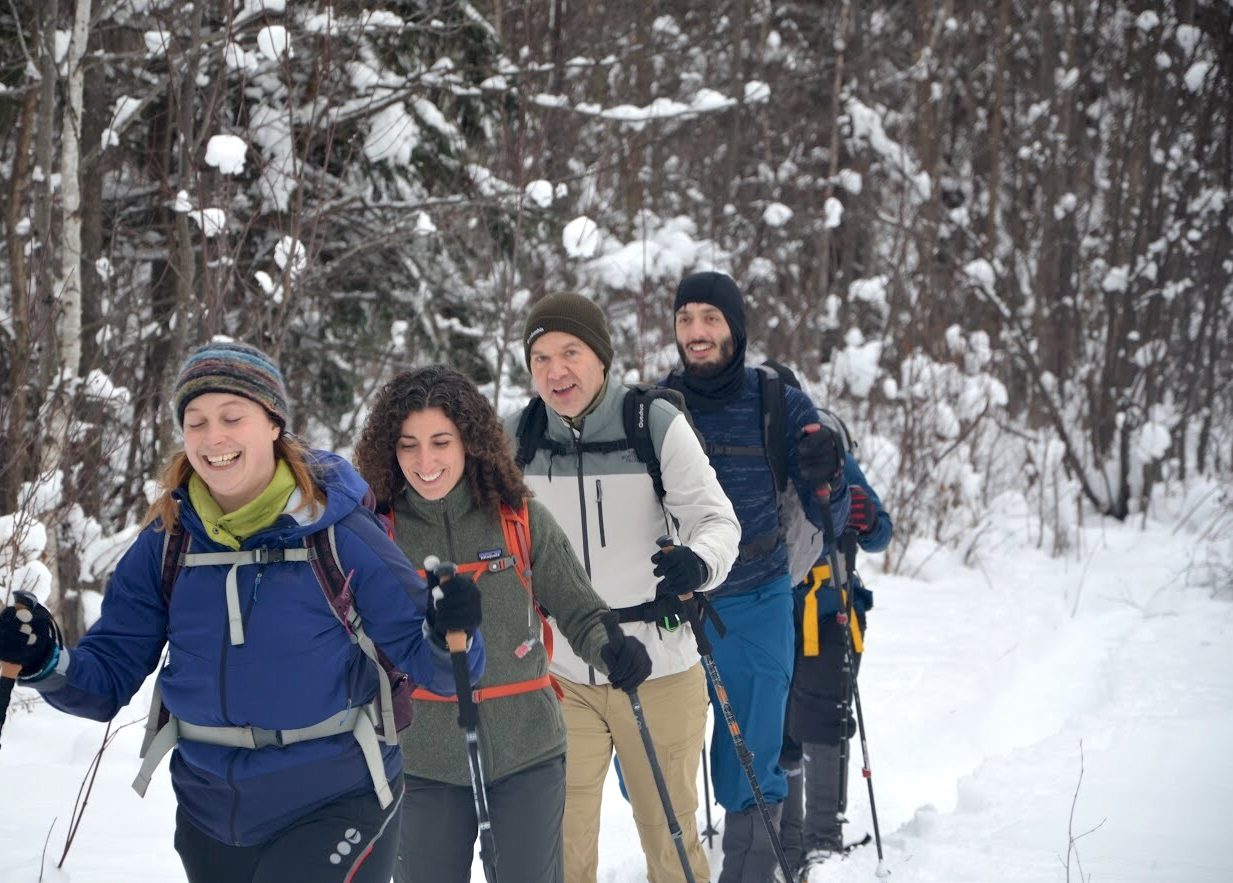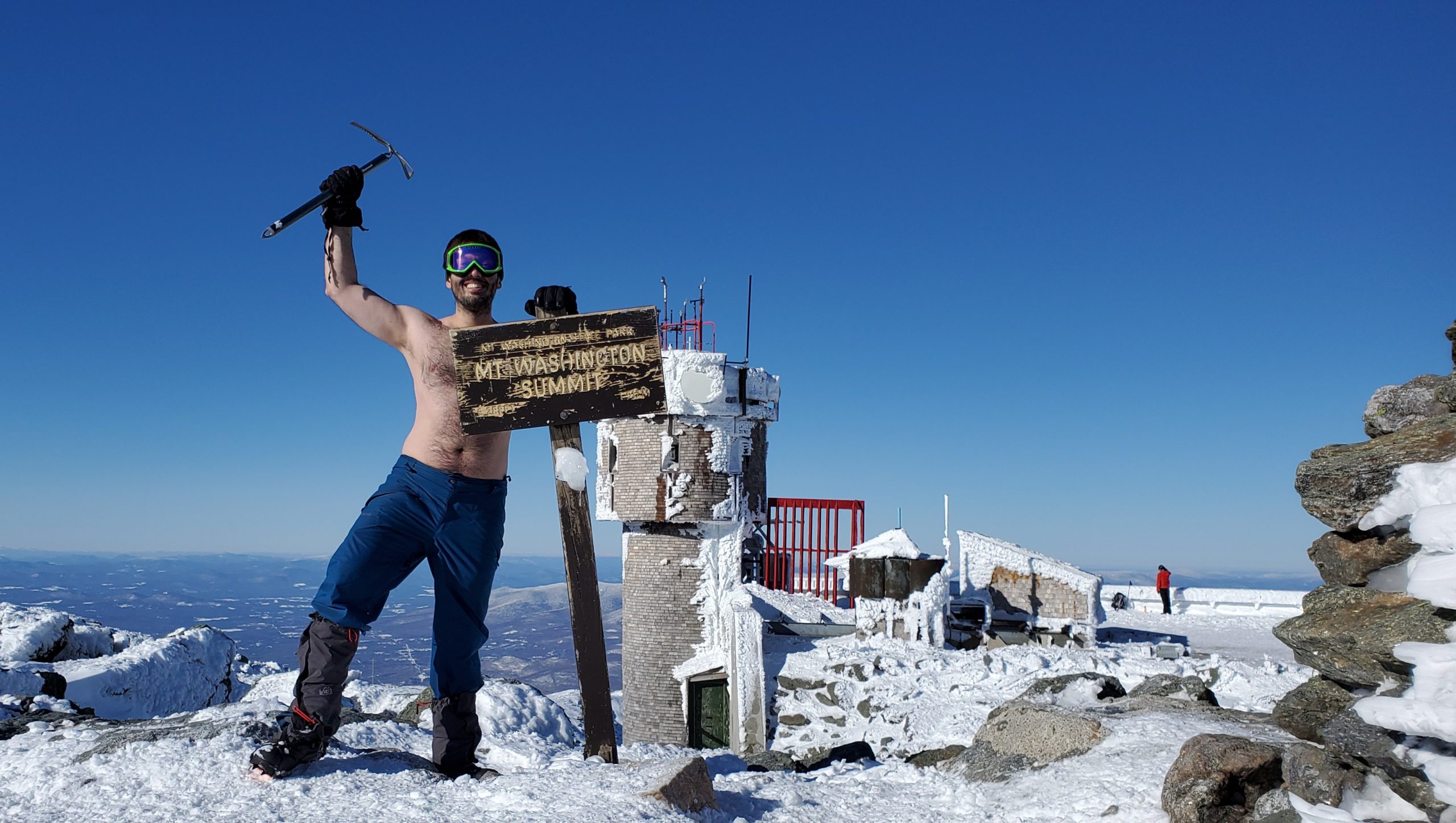
Walking can get you from here to there, but it’s not a widely-celebrated cultural or athletic goal for Americans. Find out how transitioning from a high-impact sport to walking helped one man find his way to a healthier, happier life.
At -14°F my tears built on top of each other in a frozen huddle, lightly causing my eyelashes to stick together as my group and I climbed up the Ammonoosuc Ravine Trail to summit Mt. Washington.
The team kept walking, and we were eventually rewarded with some of the most beautiful weather the mountain had to offer. From -14°F it shot up to a balmy 28°F, and no wind plus a blazing sun made the weather feel like a Spring day in New Hampshire.
Snowy paths gave way to rocky hops, the 3,800 feet of elevation gain to the top rewarded us with 360 views of other states, and the exertion had us down to one layer per person instead of the usual shirt plus mid-layer and windbreaker.. After waiting for a different group to spread someone’s ashes at the summit, several members of our team made sure to take photos of ourselves with our shirts off while proudly displaying ice axes in a show of force.
Who would have thought walking could make you feel so tough?
If you had asked when I was 14, definitely not me. I’m from Iowa where nobody walks unless they’re there for the exercise. Consequently there’s barely any public transportation, so the only individuals who took the bus when I was growing up were people living with disabilities, those who lost their licenses because of DUIs, or the impoverished.
I was lucky to be none of the above, but consequently I drove everywhere. I used to live a comfortable 20-minute walk away from my first job, a sandwich deli next to the Mississippi River, and not once did I take the opportunity to walk next to one of the most iconic bodies of water in the world.
Walking was just not in the “cool” category. At age 14, I was 5’10, 140 pounds, and didn’t want to participate in regular gym class—I wanted to get big. I began weight lifting as part of a high school program in Iowa called Bigger, Faster, Stronger. In football country, being a “hoss”—the term for a big and strong man, is synonymous with being respected.
My weight lifting teacher paired me with a kid named Julian who was 6’3, 220 lbs, had played in the Little League World Series, and had set multiple weight lifting records as a freshman in high school. Julian eventually became a center in the NFL. Yes, he was a real hoss.
I, on the other hand, had played the tenor saxophone in Jazz Band.
But deadlifts, squats, and other weight lifting routines punished me into metabolic madness, and within three months I gained 25 lbs, mostly muscle. To this day I still have the stretchmarks on my shoulders to prove the massive muscle gain I built in a short period of time. Not coincidentally, my self confidence also gained mass.
Even during hippy college in Marlboro, Vermont I maintained frequent weight lifting routines in a place where being big meant infinitely less in terms of social value. But I supplemented my weight lifting with the campus’s more celebrated sport of soccer four days a week with the Fighting Dead Trees, and the sprints also helped build muscle.
However, walking? Not a chance. I refused to walk even 15 minutes from the dinning hall to the cabin in the woods where I lived. I’d jump in my Honda Accord, light it up, and drive like a bat out of hell for two minutes past the judging faces of professors who would sometimes cross-country ski to reach campus. Walking for pleasure never existed. After four years of living in the Green Mountains of Vermont, I took exactly one walk in the woods on Family Day freshman year, and that was it.
But while living in Spain after college, I befriended a 60-year old Spanish philologist who was more than happy to share some senderismo, or hiking. Twice a week we hit the desert mountains of Murcia for three to four hours of hiking, and between views of olive trees tucked within the peaks and wild dates, grapes, and other flora growing alongside the trail, I discovered a love of walking.
However, I still identified with weight lifting, and I continued to lift weights as my main form of exercise until one day when I was 27 and in Kazakhstan visiting my wife’s family. I did some Arnold Press reps and felt a little twitch in my left shoulder blade.
Within several hours I was on the floor writhing in pain. Every breath felt like a knife was being plunged into my ribs, and any time I put my arms out I felt paralyzed with suffering. It was the first time I had cried as an adult man from pain. My in-laws called a doctor to make a home visit, and when she arrived, she administered long needles filled with pain medication. Several months afterwards I tried lifting light weights only to suffer another back spasm. And then another. And then another even while doing daily, mundane tasks.
I had to take days off from work at various times because I was in pain. Not being able to lift felt emasculating, and my confidence was crushed.

But when life gives you mountains, you climb them—and that’s exactly what I did.
My discovery of walking for enjoyment in Spain extended to several treks in the White Mountains of New Hampshire, but I didn’t expect that hiking these peaks would be the answer to my back’s road to recovery and a way to feel big and strong. Spending hours outside in heat and cold with no option except to finish on my two feet was motivating. And if I couldn’t lift weights, then I could at least walk mountains and feel like a bad-ass.
I walked through heat, cold, leaves, ice, snow, and more over the year after my weight lifting accident. The best part? I never got back spasms from hiking, and when I combined my walking with poles, I was unstoppable. If I was suffering from back spasms beforehand, I could still nail a long walk in the woods, and by the end of the hike I would feel amazing. Even after suffering from a back spasm due to my posture at work, a few days later I managed to complete my first solo hike: 18-miles and 5,000 feet of elevation gain.
What I didn’t realize until later was that walking uphill was stretching my leg muscles, thereby relieving tension on my lower back. Hiking downhill also built finer leg muscles. And with the help of poles, my lats and triceps regained muscle, so much so that I had to be careful buying shirts again.
But is the jury out on walking as a therapy to cure back pain? A survey of several studies showed that walking can help patients manage pain located in the lower back, yet there are other reports that show inconclusive evidence. Although “walking” in this case might not necessarily mean traversing mountains in four seasons, the initial accessibility of the “sport” extended my love of hiking in the mountains, and there’s no doubt it helped my body and confidence recover.
I don’t identify with the hoss type anymore, and visibly, my body doesn’t either, but I do see myself as a happy and strong mountain, woods, and city walker. The ability to walk comfortably and confidently in temperatures ranging from -30F to 90+F in rain, snow, ice, and wind provides me the image of hardiness I need to feel good about my physical strength, even if I’m not bench pressing alongside a future NFL player.
The Mount Washington group and I descended down the mountain that warm January day via the Cog Railway, a trail next to the train tracks that tourists use to summit. Even then, the feeling of toughness persisted. The non-stop descent with thigh-high snow required careful footing at times on slopes that could have caused any of us to roll to our deaths down the adjoining ravine. But once we reached the bottom of our epic hike we broke out into a team chant based on some inside joke from the day, laughing, and solidifying our commitment to a love of walking outdoors.




